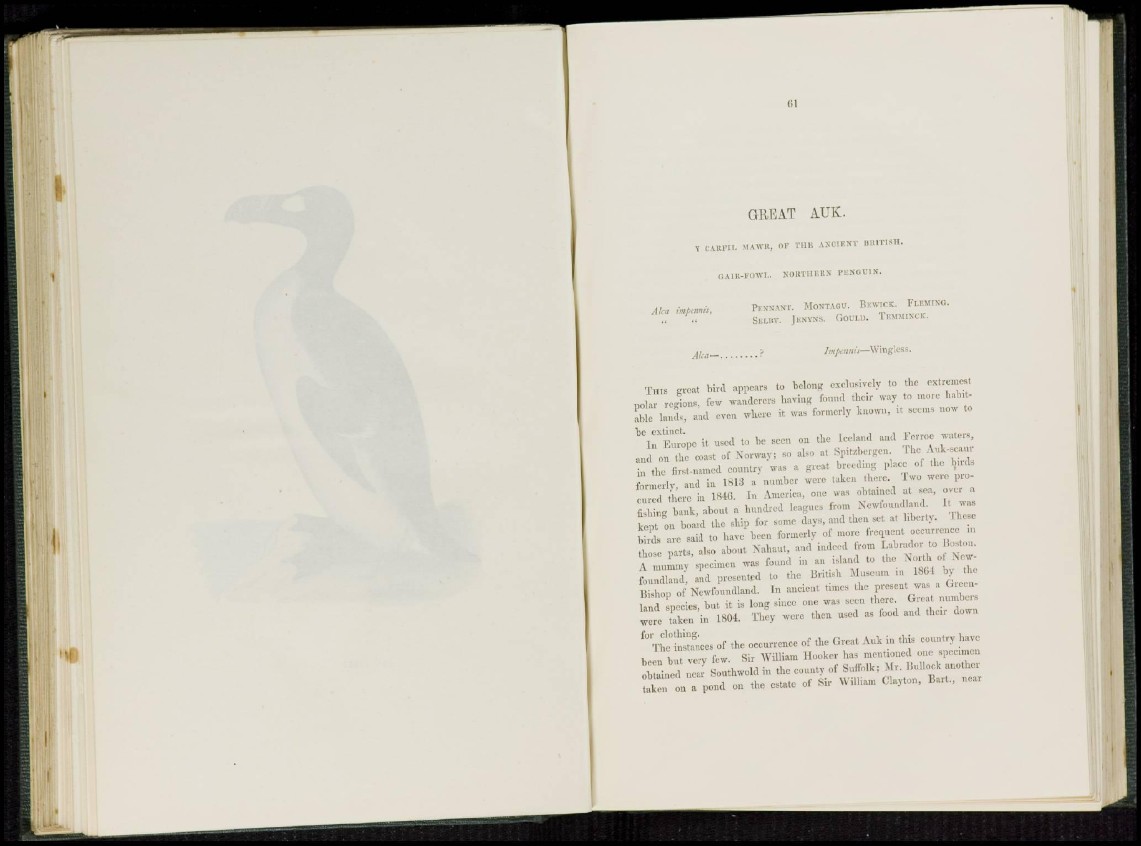
GREAT AUK.
Y CARFIL MAWE, OF HIE IN0IENT BRITISH.
GAIR-FOWL. NORTHERN PENGUIN.
A lea impettnis, PENNANT. MONTAGU. BEWICK. FLEMING.
" " SBLBT. JENYNS. GOULD. TEMMINCK.
A lea— ? Impennh—Wingless.
Tins great bird appears to belong exclusively to the extremesl
polar regions, few wanderers having found their way to more habitable
lands, and even where it was formerly known, it seems now to
be extinct.
I n Europe it used to be seen on the Iceland and Ferroe waters,
and on the coast of Norway; so also at Spitsbergen. The Auk-scaur
in the first-named country was a great breeding place of the birds
formerly, and in 1813 a number were taken there. Two were procured
there in 1846. In America, one was obtained at sea, over a
fishing bank, about a hundred leagues from Newfoundland. It was
kept on board the ship for some days, and then set at liberty. These
birds are said to have been formerly of more frequent occurrence in
those parts, also about Nahaut, and indeed from Labrador to Boston.
A mummy specimen was found in an island to the North of Newfoundland,
and presented to the British Museum in 1864 by the
Bishop of Newfoundland. In ancient times the present was a Greenland
species, but it is long since one was seen there. Great numbers
were taken in 1804. They were then used as food ami their down
for clothing.
The instances of the occurrence of the Great Auk in this country have
been but very few. Sir William Hooker has mentioned one specimen
obtained near Southwold in the county of Suffolk; Mr. Bullock another
taken on a pond on the estate of Sir William Clayton, Bart., near